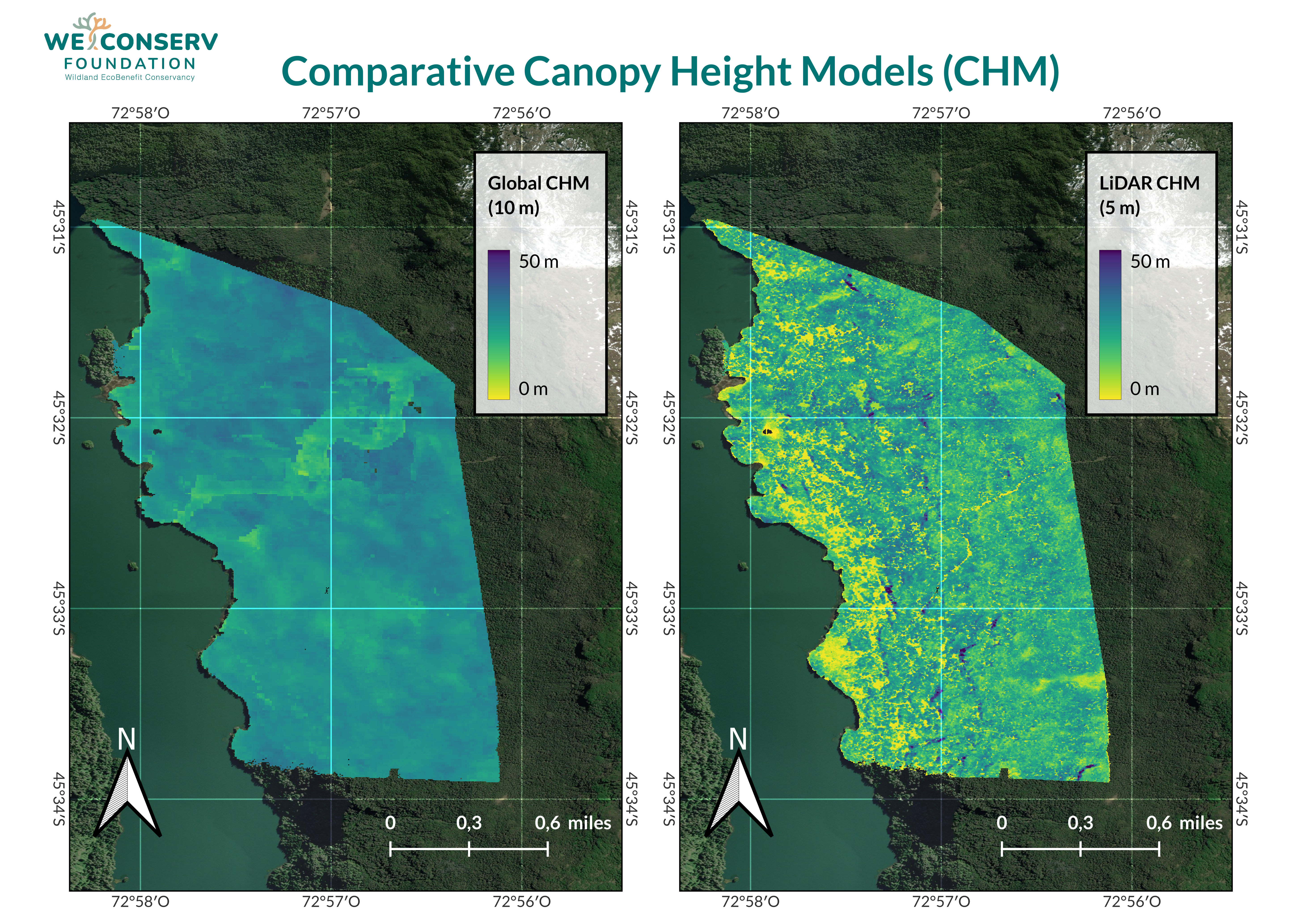Comparative between satellite and aerial products (drones)
In this exercise we are seeking to compare and prove the differences between a satellite product and an aerial one captured with a higher resolution drone.

Canopy Height Models or CHM, are tools used to represent the forest’s vertical profiles. At WEConserv, we employ LiDAR data collected from the drone flights in our field trips to generate these models that allow us to obtain centimeter-precision products in line with the geodesic methods that must be included in the drone flight, such as the DJI Matrice 300 RTK with GNSS antenna.
The image on the left side shows an example of a global CHM obtained from satellite data of open access with a 10-meter spatial resolution whereas the image on the right side presents the same type of product but processed with LiDAR data collected by the DJI Zenmuse L1 sensor with a 5-meter spatial resolution. The high resolution of this product allows more precise and detailed reconstruction of the vertical profile of the interest area.These measurements are used for our foundation to calculate aboveground biomass and carbon sequestration.
The use of LiDAR data and the generation of CHM from them provide us with a complete view of the current conditions of the forest, which facilitates its health assessment and effective conservation measures planning, as it is easier to detect changes with a higher resolution. By calculating aboveground biomass and carbon sequestration, we can better understand the role of forests, the carbon cycle, and their contribution to climate change mitigation.